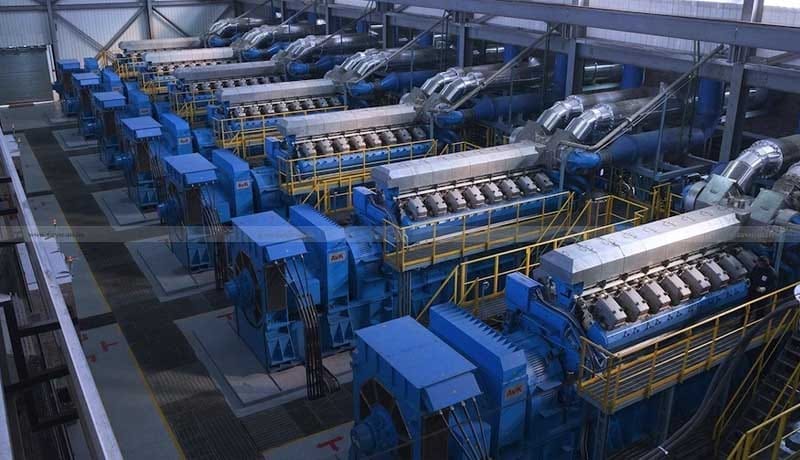The Future of Industrial Automation: Emerging Trends in the Manufacturing Sector

Want to be at par with the market standards while being dominant in the manufacturing sector? We are here to serve you! The electric components available at our only store will help you to keep up with the latest trends in the industry.
The field of industrial automation has significantly expanded in recent years. Control systems and programmable logic controllers (PLCs) are only two examples of the types of automation equipment frequently used in the production and process of manufactured goods and industrial materials. Innovations in AI and the IIoT promise an even brighter future for industrial automation. Let's read more to know the emerging trends in electric components and their impact on industrial automation.
Overview of Industrial Automation Trends
As industrial automation has been around for a while, new developments have made it more productive and less expensive. Manufacturing facilities can now make things at a higher rate with fewer mistakes with the help of automation equipment. Many firms that have used robotics a7 automation have seen an increase in output while simultaneously decreasing their labour expenses. Forecasts place the value of the industrial automation industry at "US$ 81.4 Billion by 2033," up from "US$ 40.6 Billion in 2023." As a result, this market is expected to expand at a ‘CAGR of 7.2%’ during the next coming years. These tendencies are here to stay; therefore, more sectors will likely adopt automation in the future.
So why wait to boost your operational efficiency in the ever-growing competitive market?
Understanding the Emerging Trends in Detail
- The Role of Artificial Intelligence (AI) in Industrial Automation
In recent years, artificial intelligence (AI) has become a popular buzzword due to its profound effect on industrial automation. It may allow machines to draw on from past experiences to influence their future decisions. Predictive maintenance, in which machinery is constantly checked for signs of potential issues, can get fixed before a breakdown using this technology. Moreover, augmented reality technologies have been implemented in quality control to reject defective items automatically.
| Trends | Market Evaluation |
| 2023-2033 CAGR | 7.2% |
| Estimated Growth on 2023 | $ 40.6 Billion |
| Estimated Growth that can occur on 2033 | $ 81.4 Billion |
| Trends | The rising popularity of industrial automation is attributed to superior AR Technologies. |
| Future Perspectives | Growing consumer interest in safety automation solutions mitigates all risks associated with market exposure. |
- The Impact of Industrial IoT (IIoT) on Electronic Components
Due to the emergence of IIoT, robots can now facilitate factory workers in many ways. This technology has enabled the integration of machines with sensors and software, making them smarter and more efficient. IIoT has also enabled remote monitoring and control of machines, which has improved maintenance and reduced downtime. Electronic components such as sensors and microprocessors have become critical in IIoT, and their importance will only increase in the future.
| Trends | Market Evaluation |
| 2023-2033 CAGR | 7% |
| Estimated Growth on 2023 | $5.06 Billion |
| Estimated Growth that can occur on 2033 | $9.95 Billion |
| Trends | Increasing demand for advanced automation & focus on IIoT. |
| Opportunities | Emphasis on IIoT strengthened with innovative technologies. |
- Emerging Trends in Industrial Automation and Manufacturing
Several emerging trends are set to impact industrial automation and equipment of the same. Edge computing in this is one such innovation; under this model, data is processed at the outside rather than consolidated systems. This trend will become more critical as IoT devices become more prevalent. Another trend is the use of automation equipment, which will facilitate faster and more reliable work-process in machines. Industries like manufacturing and industrial automation place a greater emphasis on these systems.
| Trends | Market Evaluation |
| Category used | Automation Equipment for IIoT |
| Trends | Edge Computing |
| Usage | Manufacturing & Relevant Industries |
Benefits of adopting these trends for Industrial Automation
Adopting these emerging trends in industrial automation and electronic components has several benefits. Enhanced efficiency and productivity is a major perk here. By using AI and IIoT, machines can become
- Smarter and more efficient
- Reduced downtime with quality improvement.
- Reduced labour costs with the quality of products.
- Improved safety in the workplace, as machines can perform dangerous tasks for humans.
The Future of Industrial Automation with Emerging Trends
Sensors and programmable logic controllers are becoming increasingly vital in the manufacturing industry, which can bring a change in the future of the same sector. Future developments in industrial automation are likely more substantial because of the development of these technologies.
The first programmable logic controller (PLC) appeared in the 1960s, and ever since then, electronic components have been indispensable in the field of automation. These parts have come a long way with changes in size and speed while becoming more space- and energy-efficient. Recently developed technologies like AI and IIoT have made control systems even more important in industrial automation.
Hence what do you think? Is the growth set to rise?
Conclusion
Positive developments are expected on the horizon for industrial automation, and electronic components will play a significant part in bringing them to fruition. Manufacturing operations are highly automated and are in great demand because of technological improvements. Recent technologies like AI and the IoT are being integrated into production processes in ways that have never been seen before, and the results are nothing short of revolutionary. Thus, companies are progressively investing in automation technologies to boost output, cut expenses, and increase quality. Also, businesses must adopt the most recent innovations in industrial automation if they wish to maintain market dominance and experience steady development.






